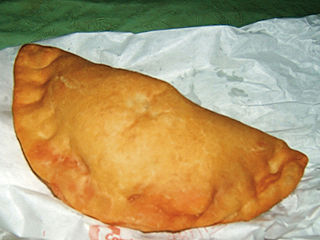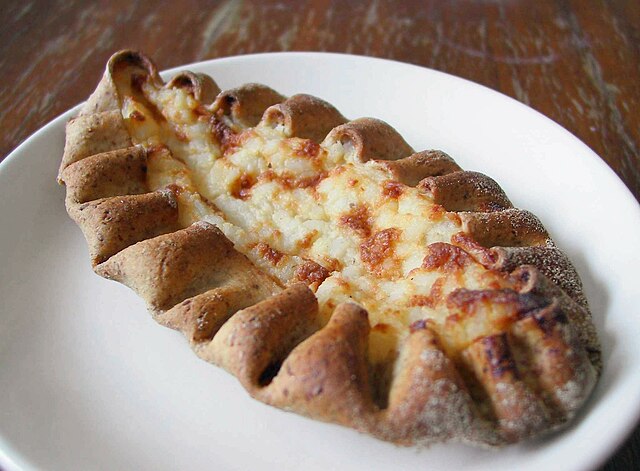Yooper Pasties
Back to: Blog /Go to Part II Tiddy Oggie Lunchbreak (Part II) / Pasty Place Directory

An Untold Story | Pasty Wars
Origins
The exact origin of the pasty is debatable. For many sauna-sweating Finns, the contentious history of the savory pie dates back to their Finnish ancestors’ arrival in the Copper Country. For others, discovering the European historical record of a pasty can be disappointing. It’s like telling the French that French Fries actually originated in Belgium, or telling Russia that the Polish distilled vodka 200 years before any Siberian claim. The hamburger – is it from Germany or the U.S.? Most Yoopers know where the pasty comes from… Or, do we?

Finnish Culture
Many pasty stores around the Upper Peninsula bare Finnish decor, drape Finnish flags in their windows, and even incorporate the iconic blue Finnish cross into their signage and logos. Recipes are passed down from multiple generations of pasty-makers, grandparents of grandparents, many of whom have Finnish heritage in their blood. The pasty is celebrated at Finn-Fest, it’s a symbol of Finnish pride in Northern Michigan. Naturally, many Yoopers assume it’s Finnish.

The literature is hard to dispute – Finns were introduced to the pasty in the late 19th century, long after its origin. As the story goes, in 1864, a couple dozen Finnish miners went to work in the copper mines in Hancock, MI. There, they first discovered the over-sized potato pocket from fellow miners who hailed from Cornwall, UK. Cornwall is the westernmost county in England. Article after article repeatedly honors this region for creating the first pasty. According to many, Scandinavians didn’t even lay their eyes on a pasty prior to 1864. The assumption that pasties are Finnish is a common misnomer, a historical hiccup. We’ve all been crediting the wrong culture. Pasties are Cornish, not Finnish.
Crack open a book, Google it, Bing it, even ask your local pasty bakery. Bomb shell? You may be surprised to learn what every ‘History of the Pasty’ regurgitates – the Finnish only adopted the pasty. They’re thieves! Finns hijacked the pasty from England.

Can it be true? Who really created the first pasty? When that question is explored with depth, the answer isn’t so clear. Finnish Yoopers may be pleasantly relieved to know how much credit they can take for the creation of the pasty. Historical inconsistencies suggest the modern pasty wasn’t entirely created by Brits. The authentic version of a traditional pasty may have equally strong origins to Michigan’s Upper Peninsula as it does to England. The pasty as we know it today may have never existed without the influence of Finnish immigrants.
Finnish Pasty Theory
Turniptual Disagreement
It all comes down to roots. Before you accept that a Pasty’s roots lie exclusively in England, think of a wildly popular ingredient in any true pasty. Coincidentally, it’s a root vegetable, the Swedish turnip, aka swede, or rutabaga! Even the Cornish Pasty Association lists four required ingredients that must be used in order to be a true pasty, beef, potatoes, onions, and swede. Two of which don’t grow naturally in Cornwall’s mild coastal climate – onions, and swede. The organization calls it an essential. Yet, swede wasn’t widely spread across England until the 1900s, two centuries after Cornish miners allegedly created the pasty.

Royal Roots
There are few reports of rutabaga in the gardens of English royalty early in the 14th century, but, working class Cornish miners would not have regularly included the root vegetable in any recipe until the early 20th century. It would be absurd to argue that Cornwall didn’t create a potato stuffed pastry in the early days of mining, but bread stuffed pockets were popular throughout many cultures, all over the world. The early pasty was carried to work in the mining fields not only because of its mobility, but primarily because of its affordability. Before 1900, not only did turnips not naturally grow in Cornwall, importing them would’ve been an impossibility. In the early years, turnips were much like truffles are today, a rarity, a delicacy, arguably too expensive for the working class.
Where the White Swede Grows
Where does swede grow? Botanists found swede originally in Scandinavia in 1620. Specifically, the plant was a wildly abundant resource used in Norway. The 30 Finns who voyaged to Hancock were native to Finland, but prior to 1863 they lived and worked in mines in Norway. Coincidence? Maybe. When the miners ventured across the pond to establish the first permanent Finnish-American settlement here in the U.P., rutabaga was already a fixed staple of their diet.
Fresh off a feeding frenzy of welcomed immigration, crops like swede made their way to the melting pot of the American Midwest earlier than a debut in Britain. Of these vegetables, the rutabaga was established in farming towns in Illinois as early as 1817 and had been available to the Yooper Finns immediately upon their arrival. Cornwall, isolated naturally along the edge of a small populated island, had to import any crop not-native to the land. Unlike the new American immigration wave, Cornwall was culturally secluded, rarely discovering new crops due to very little foreign immigration. They had a difficult enough time growing wheat and potatoes. The Cornish diet primarily consisted of fish. There was little to no effort to introduce new crops to this already agriculturally inhospitable area. If the Finnish can’t take credit for adding veggies to the pasty recipe, the high-demand of a rutabaga version likely came from the Finns in the U.P. By the 1920s they made up nearly 40% of the Keweenaw. The English would have only recently discovered the vegetable, and it had been a part of Finnish life for centuries. The ultimate question is:
Did Finns add veggies and meat to the Cornish pasty, or did the Cornish add potatoes and wheat to the Finnish pasty?
Either scenario was likely done during or after their introduction in the Upper Peninsula.
TurnU.P.
The pasty that the Cornish miners introduced to the Finns at the copper mines in 1864 would not have originally included rutabaga. At the time it wasn’t a readily available vegetable in Cornwall. The traditional pasty as defined by today’s standards could not have existed in that part of England until after the recipe was perfected with swede. This happened post 1900, possibly by the Finns in the U.P. Prior to that, the pasty’s only consistent ingredient was potato. Potato and nothing, potato and… Anything, really. The English added everything to their early version of a ‘pasty’ – fish, poultry, fruit, and berries. With that loose definition, a Polish pierogi could’ve been considered a pasty, or an Italian calzone, even a Spanish empanada.



Pierogi, Empanada, Calzone
Some say the first pasties had cheese and reindeer. Others suggest veal and venison, all of which are meats far more popular in Scandinavia than England. One of the earliest cuisines in Finland is the Karelian Pasty, some still call it the Finnish pasty. Different from today’s traditional Cornwall version, it didn’t include potatoes, but was made with cheese, similar to the pasty’s earliest depicted recipes.

Nonion Business
Beyond just swede, Finland was already using all the innards of a modern day pasty long before the 18th century. Potatoes, rutabaga, onions, and rye make up four of the main items in Finland’s agricultural pallet. The classic Finnish pasty, depicted above, uses rye and cheese. The traditional English version uses flour. Yet, as recent as five years ago Cornwall was still considered “not a suitable location for growing wheat or onions commercially.” Today, major Cornish pasty bakeries say they only source 45% of its flour requirement from local growers, and are only “hoping” to source 40% of its onion in the “near future”. Modern day commercial farming is advanced, highly adaptable to even less-than-ideal conditions, but farmers choose not to grow crops there because of the climate. Was the landscape of Cornwall so different 200 years ago? Could it produce onions back then where it can’t now? Maybe, or, it could be that early Cornish pasties didn’t include onions at all.
The majority of Cornwall lies on the coast. It’s pummeled by warm air off the gulf jet stream. The annual-average temperature is a mild 65°. The climate is much different than Finland. Crops that thrive in Finland won’t in England. The soil in this part of Britain is very poor for farming. With this agricultural shortcoming, it’s far more probable the pasty that existed prior to 1900 was nothing like the pasty we know today. Picture a hot-pocket filled with potatoes… just potatoes, and more potatoes.

Jet Golf Stream / Cornish Climate
Cornish Hunt Tin < Finnish Hunting
The first recipe published for a pasty included venison, not steak, or beef. Although Cornwall had wild-game, it’s unlikely the Cornish were active hunters. Its climate is more conducive to a fishing industry. Hunting reindeer, elk, and caribou was a daily activity for Finns, and subsequently Finnish Yoopers. In England, just as the tradition continues today, hunts were exclusively reserved for the elite and royals, not the working class. The Cornish were expert miners, but the county remains the poorest in the country today. Many historical accounts of the pasty say that meat was added to the mix later, possibly only when the Cornish miners met Finnish miners, who were regarded as skilled outdoorsmen.
Finnish Hunting | Cornish Hunting
Past-Day?
Written correspondence of English royalty in the 14th century is often referenced as surefire evidence for the earliest pasty. Various letters and aristocratic memorandums between 1300 and 1500 reference a venison meal in conjunction with the word “pasty”. Could that word refer to the entree we associate with today? According to Brian Harsch, owner of Jean Kay’s Pasties in Marquette, pasty simply means past day, or, leftover. In English cuisine, it’s not uncommon to forget that today’s proper nouns can be deciphered easily. The translation-leap from Old English to American English is simple, and overlooked. It’s inevitable other regions never referenced an English word. It’s possible that pasty wasn’t a noun during this period, but could’ve been used as a temporal-adverb, a unit of time. It may have been a simple reference to the past. The word pasty may have been similar to the word “yesterday.” If we looked through historical records and found the Finnish translation of ‘yesterday’s venison’ we may find an earlier original ‘pasty’.


Spoken Like an Englishman
The original potato-only recipe is also hinted-at in Cornish vernacular. Today the accepted word for pasty in Cornish dialect is ‘Oggie’, loosely styled after the word ‘Hoggie’ which directly translates to ‘Pasty’. In addition, you’ll often hear the term ‘Tiddy Oggie’ used interchangeably as reference to a normal modern Cornish pasty. Others only use ‘Tiddy Oggie’ when describing a pasty with ‘only potato’. ‘Tiddy’ or ‘Teddy’ meaning ‘potato’ or ‘spud’. The Cornish pasty in 1864 included nothing more than crust covered diced potato, and the name stuck. Maybe we can give credit to the Finns for adding rutabaga, onion, and meat to the mix, right here in the U.P. At the very least, rarely did the English version include everything it does today.
Carrot Cops
Harsch remains adamant that the pasty is Cornish, as most are. Jean Kay is Brian Harsch’s mother, a descendent of Cornwall, England, and her recipe is passed down and still used at the popular Marquette and Iron Mountain Pasty shops. Jean Kay’s Pasty and Subs have been baking delectable pasties for over 20 years in the U.P. Yet, according to an organized group of Cornish pasty makers in England, if Jean Kay’s were located in England, it would be all but illegal for them to refer to their pies as a ‘Cornish Pasty’. A very specific pasty recipe is sealed by the European Union, deemed a Protected Geographical Indication (PGI). The PGI is one of three European designations created to protect regional foods that have a specific quality, reputation or other characteristics attributable to that area. It acts like a Trade Mark or ‘Appellation Controllee’ and stops manufacturers from outside a region copying a regional product and selling it as that regional product.
Although the family has Cornish blood in their genes, the meat and potatoes of Harsch family recipe seems to be more native to the U.P. than England. The differences between a Yooper pasty and one that the PGI of the European Union protects, superciliously “disqualifies” Jean Kay’s amazing pie from officially claiming Cornish origins. What are the differences? The shape – Harsch’s pasties are circular, an official Cornish pasty is strictly ‘D’ shaped. The meat – PGI rules state a pasty must be beef, Jean Kay’s uses steak. The association also says Cornish pasties must include rutabaga, and Jean Kay’s offers one without. The ultimate slap in the face to Cornwall is a pasty with carrots. Like most U.P. veggie versions, Jean Kay’s includes carrots. In Cornwall, they say, “Never attempt to add carrot, this is sacrilege!” – Cornish Pasty Association
One would argue that Brian Harsch’s pasties are better off for these unique subtleties. Like many pasty-makers in the U.P., it seems he’s only evolved the tiddy oggie closer to perfection. The Upper Peninsula has over 70 pasty outlets, and no two versions taste the same. “No matter where you get it, the pasty is always a family recipe,” said Harsch. “No one makes a better pasty than you’re grandma. It was started in Cornwall, and was adopted by the Finnish, just as different versions were adopted by Germans, the French, and the Polish.” He recognizes that the U.P.’s regional adaptation of the Cornish pasty may have influenced different variations, which may be why some Finns substitute carrots for potatoes, but maintains its true origins lie in England.
Protected Geographical Indication
Finn and Bare It
So, why does Cornwall get this uncontested credit for the original, and, why is the Finnish connection assumed, but unpublished? It’s complicated, but it’s evident in cultural identity embedded in Finnish history.
For the descendants of the original 30 Finnish miners and the following wave of Finnish immigrants, assimilation wasn’t immediately on the agenda. Although hardworking, Finns in the U.P. became clannish, many refusing to learn English or adopt any cultural similarities to the rest of the population. They encountered ongoing strained relations with the Irish and the Cornish, primarily due to competition for work in the mines. Because they were less experienced miners than the Cornish, they were initially regarded as lower class.
They kept private and formed enclaves. It was the second wave of Finnish immigrants that hoped to adopt more American customs. They came to the U.P. quickly. These Finnish Yoopers were already part of a multicultural background. In less than 100 years, their home nation went from an adjoined country with the Swedish, to a socialist Russian state, followed by unrest, civil war, immigration to America, reverse immigration back to Finland, and a late declaration of independence. Cultural identity for the Finnish American wasn’t consistent. Neither was the folklore that defined them, and that included their food.
Everything on their dinner table had been influenced by the onslaught of cultures they encountered. Claiming ownership of a collaborative pastry wasn’t a high priority, but it was certainly natural for them to embrace it in their diet. In the Upper Peninsula, the enclaves they formed boomed, at one point making up 40% of the population of the Keweenaw. They still worked in the mines, so pasties were always popular. Pasties became commercialized when first sold at churches for fundraisers. Churches in the Upper Peninsula were largely established by Lutheran Finns. When Yoopers spread toward the Central and Eastern U.P., the pasty would follow, and become a generational pass-me-down. Shops formed, and we kept the association afloat, where it’s celebrated today.
Back in England, the story was different because European Finns not associated with the U.P. had little connection with its development, and the Cornish history became popularized as there was nothing across the pond to contest it. By the 1860s when mining in Cornwall completely dried up, they lost the entire fabric of their regional identity. Mining since the Bronze age, when that era was over, the Cornish clung to a proud history by filling up their past with Cornish folklore, ignoring that they filled up their pasty with Finnish food.
Originally it was the pasty’s simplicity, easy to grow ingredients, and convenient ‘to-go’ shape that attracted the impoverished mining community of Cornwall to the entree. There’s no dispute that the shape of a pasty came from England. Rumor has it the crimped edges of the pasty acted as a handle, and the end portion of the pasty wasn’t meant to be eaten because miner’s hands were covered in arsenic from their work. Some say the unique shape prevented metal poising and consumption of ash and soot. The shape of the pasty is very important to its historical significance. But, early on, without Finnish input, what filled the iconic d-shaped dish? The essential fillers that make up a traditional Cornish pasty were either too expensive, unknown, unavailable, or too difficult to grow in Cornwall until 1900. Before that, The Cornish established the cut of crust and the potato filler. Eventually, it was officially Cornwall that boasted the claim to fame, settling on a final recipe. It didn’t happen until the Finnish filled it up with their favorite traditional foods, and it all likely happened in the melting pot of Michigan’s Upper Peninsula.
Without Finns in the UP., a Cornish pasty was just spuds and crust, a far depleted version from what we know today. Some would say without the essential fillers, it wasn’t a pasty at all.
–
Don’t believe it? Click here for the Cornish Version

